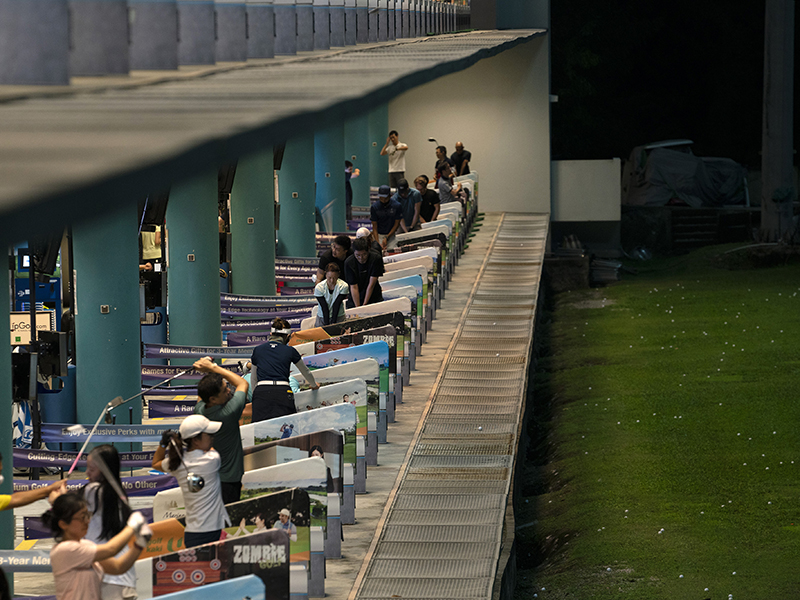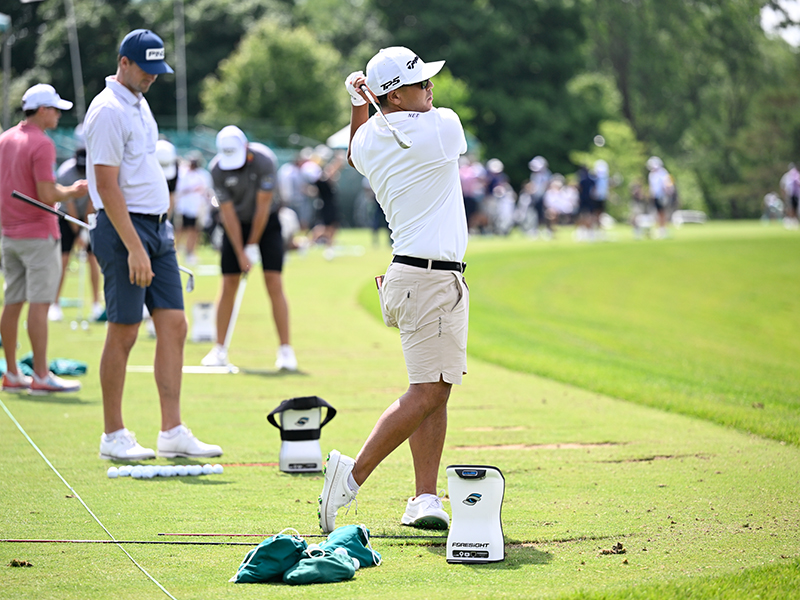How To Prepare The Night Before A Competition: 4 Expert Tips And Drills To Help You Play Your Best Golf
Got time to squeeze in one last practice before the big competition? Our expert's four tips and drills will help you to play your best golf when it matters...


It’s the night before a competition and you fancy nipping along to the driving range to squeeze in one last practice, but how can you best use your time to help you perform well the following day?
The most important thing is to know what your personal keys to playing good golf are and focus on those. I would also advise not getting too caught up with technique the night before you play, and instead would suggest you apply my 80/20 rule, in which 80 per cent of any practice should focus on performance and only 20 per cent on technique.
It’s all about being clever with your range time, and managing it efficiently to give yourself the best possible chance of performing to your full potential. In this article, Golf Monthly Top 50 Coach Alistair Davies shares his expert tips, along with a few technique drills to fill that 20 per cent and help you play well when it matters...
1. Impact Fix
One of the things I like to do on the range the night before is get my impact position absolutely perfect. I have a drill called the ‘impact fix’, which involves taking your normal address position, then moving your body forwards into your impact position.
So move your body on to your lead side, rotate your torso, hips and knees and push the shaft forward to create shaft lean at impact. From this pre-set position, just hit little quarter-swing impact shots, trying to create the pressure on the golf ball you’re looking for and experience how your body should feel at impact.
This will help you get the right contact. I would urge you not to worry about swing positions the night before a competition. This is one of the best drills, so use it to make sure you’ve got good contact and control over the golf ball – ‘feels’ that you can then transport into the next day.
2. Driver Sharpener
If the course you’re playing doesn’t have a range, then it’s also good to sharpen up your driving the night before. One of the keys to getting your driving right is the angle of attack. Too many people hit down on the driver, costing them both yards and potentially accuracy too. This driver drill using a headcover will help.
Subscribe to the Golf Monthly newsletter to stay up to date with all the latest tour news, equipment news, reviews, head-to-heads and buyer’s guides from our team of experienced experts.
Take your driver and put the headcover down on the mat in front of the ball – just a little over a driver’s width in front of it. The idea is to then hit drives without making any contact with the headcover.
To do this successfully you will need to shallow out your angle of attack so you’re hitting up on the ball more, which will increase both your carry distance and overall driving distance.

Some driving ranges stay open late, so practicing the night before a round could be the perfect way to prepare for your next competition
3. Visualisation and Imagery
Moving on to the tactical and mental side, I would look to get some pictures on your phone of key tee shots for that particular round – either ones that you have taken if it’s your home course, or perhaps ones from a club’s website.
On the range, you can then look at the photos (or visualise the hole if you don’t have any) and adopt a strategy to play those holes in advance, rather than on the day when you reach them.
If it’s a driver hole, does it need a straight shot, a fade or a draw? What will you need to be aiming at? You’re just trying to get in sync with what you’re going to need to do tomorrow, particularly for the first few holes before you’re really into your rhythm.
You might also want to use videos or photos to inspire you. People tend to want to be either really up for it or very relaxed about a round and I’m the former, so I would watch things like Ryder Cup clips to get me in the mood and really motivated.
4. Meaningful Practice
I would also advocate not just standing there hitting several balls with each club to the same target as that’s not what the game of golf is about. You might want to imagine you’re playing the first few holes on tomorrow’s course.
Would you have hit the fairway, would you have hit the green? Do you think you would have made par or bogey there? This is a great way to make yourself feel the kind of pressure and consequence you would feel out on the golf course.
You should certainly make sure you hit each shot to a different target, and never repeat the same shot twice. You can even put each club back in the bag after you’ve hit, and work through every shot with your full process and routine
to make it feel more like you really are playing golf, rather than the range. You’re trying to create feelings of consequence and pressure, so you may even want to introduce a scoring system.

Whether you go the night before or in the morning prior to your tee time, these tips will certainly help to get you primed and prepared for the course
It’s also a good idea to remember what a typical round of golf involves. What percentage of each kind of shot are you likely to play? Roughly 25 per cent of your shots are going to be tee shots, so you’ve got to think about the kind of tee shots you’re going to face. How many drivers are you going to be hitting? How many long- irons? What are the par 3s like?
Try and replicate those shots on the range. Aim at different angles, too, rather than always playing down the line of the mats. And don’t forget that 45 per cent of your shots are going to be putts, so even if you don’t have the luxury of a floodlit putting green, do practise your stroke either on the range mat or surrounding area, or perhaps even on the carpet at home.
Want To Read More Expert Golf Tips?
The Golf Monthly archive is a gold mine of brilliant reads, documenting a journey through the history of golf dating back to our first issue in 1911. Take advantage of over 100 years of invaluable tips from the best tour professionals and coaches in world golf, by subscribing to the online Golf Monthly Archive.

Location: Forest of Arden Marriott Hotel & Country Club
Alistair is Director Of Coaching Hit Golf Academy, based at the Forest of Arden in Birmingham. He has coached numerous county squads, including Staffordshire, Warwickshire and Derby.
Roles:
Former Academy Coach Wales South West Squad
Performance Director Midland Performance Golf Academy
Birmingham University Head Coach
Solihull College AASE England Programme Coach
Greatest teaching success story:
Ben Russell's best round was 126 when he first came to me. Within a year he shot 65 gross; within three he'd achieved a playing handicap of plus 2; and within five years he was playing full time on the mini tours. Now Ben is a fully qualified PGA professional. I was absolutely delighted to play a part in his development and journey.
Typical lesson:
It all starts with the player - their goals. This is followed by an assessment or evidence gathering exercise. I watch them hit balls, assess ball flight, movement, gather video and collect TrackMan data. Firstly, we discuss the good bits and the opportunities for growth. Then, I challenge them to make changes, if appropriate, and I try to match their learning style to support their journey to better.